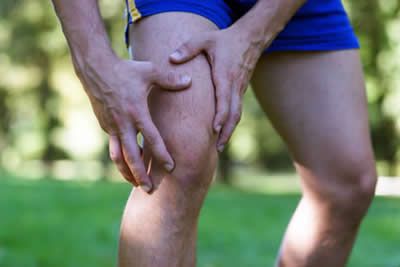
42) Smash Shin Splints: How Physio Gets You Back on Track Fast
Feeling a dull ache along the front of your shins after a run or workout? You’re not alone — shin splints are common but treatable. In this blog, we’ll explain what causes them, how to treat them, and why physiotherapy is the secret weapon to smash shin splints for good.
What Are Shin Splints?
Shin splints — or medial tibial stress syndrome (MTSS) — are that nagging pain along the inner edge of the shinbone (tibia), typically brought on by repetitive stress. They’re especially common in runners, dancers, hikers, and anyone ramping up their training too quickly.
You’ll usually feel:
- A dull ache or sharp pain along the lower leg
- Pain that kicks in during or after exercise
- Tenderness or slight swelling along the inner shin
It’s your body’s way of saying, “Hey, I’m not coping with this load right now.”

What Causes Shin Splints?
Shin splints are often an overuse injury — your body just hasn’t had time to adapt to the increased load. Here’s what contributes:
- Sudden increases in training volume or intensity
- Poor running mechanics or muscle imbalances
- Inadequate footwear or worn-out runners
- Hard surfaces (like concrete) or uneven terrain
- Tight calves or weak glutes
- Flat feet or overpronation
Think of shin splints as your bones and soft tissues waving the white flag after too much repetitive impact.
The Physio Approach: Assessment First, Always
When you come in with shin pain, we don’t just guess — we assess.
A good physio will:
- Take a detailed history (your training, footwear, surfaces, symptoms)
- Observe your walking/running gait
- Check foot posture and muscle flexibility
- Assess muscle strength (particularly calves, glutes, and core)
- Palpate the area to confirm diagnosis
In some cases, we’ll refer for imaging (like MRI or bone scan) to rule out stress fractures, especially if the pain is localised and worsening.

Treatment: Why Physio Is the Game-Changer
Shin splints can be stubborn — but with the right approach, they don’t have to linger.
Here’s how physiotherapy helps:
1. Load Management
We’ll help you adjust your training load to find that sweet spot: enough to maintain fitness without aggravating symptoms. You don’t always need to stop entirely — just train smarter.
2. Manual Therapy
Hands-on techniques to release tight calf muscles, improve mobility, and reduce pain.
3. Dry Needling
Dry needling the calf complex, including the soleus muscle can be a game changer for stubborn tightness that never goes away. Have a read of our blog on dry needling HERE
3. Taping or Orthotics
Taping can provide temporary relief and support. For some patients, custom orthotics may be recommended if foot biomechanics are a major contributor.
4. Targeted Rehab Exercises
This is the long-term solution. We’ll guide you through a progressive strengthening program targeting:
- Calf strength (both gastrocnemius and soleus)
- Foot intrinsic muscles
- Glute activation
- Core stability
We’ll also address mobility deficits — especially tight calves or limited ankle dorsiflexion.
5. Running Gait Retraining
If your biomechanics are off, we’ll give you drills or cues to help reduce impact forces and optimise technique.

How Long Does Recovery Take?
With early intervention and a tailored plan, most people feel significantly better in 4 to 8 weeks. But that depends on:
- How long you’ve had symptoms
- Your training load
- How consistent you are with rehab
Leave it too long, and it can evolve into a stress fracture — which means 6+ weeks off running. Best to nip it in the bud!
Case Study: Meet Jess
Jess, a 29-year-old recreational runner, came to the clinic with sharp pain in both shins after increasing her training in preparation for a local 10km fun run. She’d recently gone from running twice a week to five times a week — on roads and footpaths — and was pushing through the pain.
When she saw us, Jess rated her pain a 7/10 after a short jog.
Assessment Findings:
- Overpronation of both feet
- Very tight calves
- Poor glute activation
- Worn-out running shoes
- No strength training in her routine
Treatment Plan:
- We started with load reduction — dropping her running frequency temporarily and replacing it with bike intervals to maintain fitness.
- Manual therapy and dry needling helped settle the calves.
- We introduced daily calf stretches and glute strengthening exercises.
- After two weeks, we added single-leg balance and foot strengthening.
- We also referred her to get properly fitted for new shoes and trialled short-term orthotics.
After four weeks, Jess was back to light jogging — pain-free. At six weeks, she returned to full training with better load management and weekly strength sessions. She completed the fun run and now includes gym-based exercises twice per week to keep her legs happy.
Prevention: Keeping Shin Splints Away
Once you’ve had shin splints, you’ll want to keep them away for good. Here’s how:
✅ Increase training gradually (no more than 10% per week)
✅ Strengthen calves, glutes, and core — not just cardio
✅ Replace runners every 500–800km
✅ Warm up properly and stretch post-run
✅ Train on softer surfaces when possible
✅ Mix up your training — add cycling, swimming, or Pilates
✅ Work with a physio to fix any biomechanical issues

Don’t Push Through the Pain
Shin splints might seem like a minor niggle — until they sideline you for weeks. The longer you wait, the longer the recovery.
Early treatment = faster results.
At our clinic, we treat shin splints every week and know exactly what to look for. Whether you’re training for a fun run, chasing a PB, or just trying to stay active without pain — we’re here to help.
Ready to Smash Shin Splints?
If your shins are screaming, don’t ignore them. A physio-guided plan will get you back to moving pain-free — stronger and smarter than before.
Give us a call today on 9806 3077, or book online, just CLICK HERE
References
- Brukner, P., & Khan, K. (2017). Brukner & Khan’s Clinical Sports Medicine. https://www.clinicalsportsmedicine.com
- Australian Podiatry Association. Footwear and Injury Prevention. https://www.podiatry.org.au
- Physiopedia. Medial Tibial Stress Syndrome. https://www.physio-pedia.com/Medial_Tibial_Stress_Syndrome
- Running Technique. Improve Your Gait to Prevent Injury. https://www.runningtechniquetips.com
- Sports Medicine Australia. Injury Fact Sheet: Shin Splints. https://sma.org.au
Let me know if you’d like images or infographics to go with this blog — or if you’d like it adapted into a clinic flyer or social media captions!



